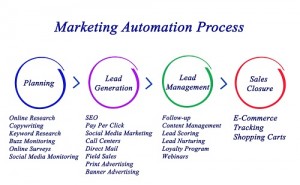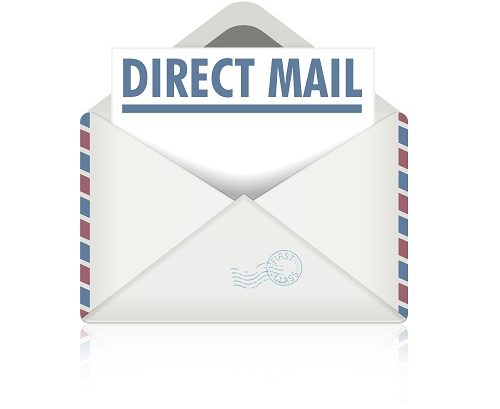 Last we covered the first six mistakes for a success direct mail campaign. Here are six more areas to avoid to get the response you need.
Last we covered the first six mistakes for a success direct mail campaign. Here are six more areas to avoid to get the response you need.
Mistake No. 7: Saving the best for last
Some copywriters save their strongest sales pitch for last, starting slow in their sales letters and hoping to build to a climactic conclusion.
A mistake. Leo Bott, Jr., a Chicago-based mail-order writer, says that the typical prospect reads for five seconds before he decides whether to continue reading or throw your mailing in the trash. The letter must grab his attention immediately. So start your letter with your strongest sales point.
Some examples of powerful openings:
“14 things that can go wrong in your company – and one sure way to prevent them” – an envelope teaser for a mailing that sold a manual on internal auditing procedures.
“A special invitation to the hero of American business” – from a subscription letter for Inc. magazine.
“Can 193,750 millionaires be wrong?” – an envelope teaser for a subscription mailing for Financial World magazine.
“Dear Friend: I’m fed up with the legal system. I want to change it, and I think you do, too.” – the lead paragraph of a fund-raising letter.
Some time-testing opening gambits for sales letters include:
- asking a provocative question
- going straight to the heart of the reader’s most pressing problem or concern
- arousing curiosity
- leading off with a fascinating fact or incredible statistic
- Starting the offer up-front, especially if it involves money; saving it, getting something for an incredibly low price, or making a free offer
Know the “hot spots” of your direct mail package – the paces that get the most readership. Those include: the first paragraphs of the letter, its subheads, its last paragraph and the post-script (80% of readers look at the PS); the brochure cover, its subheads and the headline of its inside spread; picture captions; and the headline and copy on the order form or reply card. Put your strongest selling copy in those spots.
Error No. 8: Poor follow-up
 Recently a company phoned to ask whether I was interested in buying its product, which was promoted in a mailing I’d answered. The caller became indignant when I confessed that I didn’t remember the company’s copy, its product, its mailing, or whether it sent me a brochure.
Recently a company phoned to ask whether I was interested in buying its product, which was promoted in a mailing I’d answered. The caller became indignant when I confessed that I didn’t remember the company’s copy, its product, its mailing, or whether it sent me a brochure.
“When did I request the brochure?” I asked. The caller checked her records. “About 14 weeks ago,” she replied.
Hot leads rapidly turn ice cold when not followed up quickly. Slow fulfillment, poor marketing literature and inept telemarketing can destroy the initial interest that you worked so hard to build.
Here are some questions you should ask yourself about your current inquiry fulfillment procedures:
- Am I filling order or requests for information with 48 hours?
- Am I using telephone follow-up or mail questionnaires to qualify prospects? By my definition, an inquiry is a response to your mailing. A lead is a qualified inquirer – someone who fits the descriptive profile of a potential customer for your product. You are after leads, not just inquiries.
- Am I sending additional mailings to people who did not respond to my first mailing? Test that. Many people who did not respond to mailing No. 1 may send back the reply card from mailing No. 2, or even No. 3.
- Am I using telemarketing to turn nonresponders into responders? Direct mail followed by telemarketing generates two to 10 times more response than direct mail with no telephone follow-up, according to Dwight Reichard, telemarketing director of Federated Investors Inc., Pittsburgh.
- Does my inquiry fulfillment package include a strong sales letter telling the prospect what to do next? Every package should.
- Does my inquiry fulfillment package include a reply element, such as an order form or spec sheet?
- Does my sales brochure give the reader the information he needs to make an intelligent decision about taking the next step in the buying process? The most common complaints I hear from prospects is that the brochures they receive do not contain enough technical and price information.
Don’t put 100% of your time and effort into lead-generating mailing and 0% into the follow-up, as so many mailers do. You have to keep selling, every step of the way.
Error No. 9: The magic words
This mistake is not using the magic words that can dramatically increase the response to your mailing.
General advertisers, operating under the mistaken notion that the mission of the copywriter is to be creative, avoid the magic words of direct mail, because they think those magic phrases are clichés.
But just because a word or phrase is used frequently doesn’t mean that it has lost its power to achieve your communications objective. In conversation, for example, “please” and “thank you” never go out of style.
What are the magic words of direct mail?
Free. Say free brochure. Not brochure. Say free consultation. Not initial consultation. Say free gift. Not gift.
If the English teacher in you objects that “free gift” is redundant, let me tell you a story. A mail-order firm tested two packages. The only difference was that package “A” offered a gift while package “B” offered a free gift.
The result? You guessed it. The free gift order in package “B” significantly out pulled package “A”. What’s more, many people who received package “A” wrote in and asked whether the gift was free!
No Obligation. Important when you are offering anything free. If prospects aren’t obligated to use your firm’s wastewater treatment services after you analyze their water sample for free, say so. People want to be reassured that there are no strings attached.
No salesperson will call. If true, a fantastic phrase that can increase response by 10% or more. Most people, including genuine prospects, hate being called by salespeople over the phone. Warning: Don’t say “no salesperson will call” if you do plan to follow up by phone. People won’t buy from liars.
Details inside/See inside. One of those should follow any teaser copy on the outer envelope. You need a phrase that directs the reader to the inside.
Limited time only. People who put your mailing aside for later reading or file it will probably never respond. The trick is to generate a response now. One way to do it is with a time-limited offer, either generic (“This offer is for a limited time only.”), or specific (“This offer expires 9/20/87.”). Try it!
Announcing/At last. People like to think they are getting in on the ground floor of a new thing. Making your mailing an announcement increases its attention-getting powers.
New. “New” is sheer magic in consumer mailings. But it’s a double-edged sword in industrial mailings. On the one hand, business and technical buyers want something new. On the other hand, they demand products with proven performance.
The solution? Explain that your product is new or available to them for the first time, but proven elsewhere – either in another country, another application, or another industry. For example, when we introduced a diagnostic display system, we advertised it as “new” to US hospitals but explained it had been used successfully for five years in leading hospitals throughout Europe.
Error No. 10: Starting with the product – not the prospect.
You and your products are not important to the prospect. The reader opening your sales letter only wants to know, “What’s in it for me? How will I come out ahead by doing business with you vs. Someone else?”
Successful direct mail focuses on the prospect, not the product. The most useful background research you can do is to ask your typical prospect, “What’s the biggest problem you have right now?” The sales letter should talk about that problem, then promise a solution.
Do not guess what is going on in industries about which you have limited knowledge. Instead, talk to customers and prospects to find out their needs. Read the same publications and attend the same seminars they do. Try to learn their problems and concerns.
Too many companies and ad agencies don’t do that. Too many copywriters operate in a black box, and doom themselves merely to recycling data already found in existing brochures.
For example, let’s say you have the assignment of writing a direct-mail package selling weed control chemicals to farmers. Do you know what farmers look for in weed control, or why they choose one supplier over another? Unless you are a farmer, you probably don’t. Wouldn’t it help to speak to some farmers and learn more about their situation?
Read, talk and listen to find out what’s going on with your customers.
In his book “Or Your Money Back,” Alvin Eicoff, one of the deans of late night television commercials, tells the story of a radio commercial he wrote selling rat poison. It worked well in the consumer market. But when it was aimed at the farm market, sales turned up zero.
Mr. Eicoff drove out to the country to talk with farmers. His finding? Farmers didn’t order because they were embarrassed about having a rat problem, and feared their neighbors would learn about it when the poison was delivered by mail.
He added a single sentence to the radio script, which said that the rat poison was mailed in a plain brown wrapper. After that, sales soared.
Talk to your customers. Good direct mail–or any ad copy–should tell them what they want to hear. Not what you think is important.
Error No. 11: Failing to appeal to all five senses.
 Unlike an ad, which is two-dimensional, direct mail is three-dimensional and can appeal to all five senses: sight, hearing, touch, smell, taste. Yet most users of direct mail fail to take advantage of the medium’s added dimension.
Unlike an ad, which is two-dimensional, direct mail is three-dimensional and can appeal to all five senses: sight, hearing, touch, smell, taste. Yet most users of direct mail fail to take advantage of the medium’s added dimension.
Don’t plan a mailing without at least thinking about whether you can make it more powerful by adding a solid object, fragrance or even a sound. You ultimately may reject such enhancements because of time and budget constraints. But here are some ideas you might consider:
Audio Recording. In selling summaries of business books recorded on CD or DVD, Macmillan Software Co. sent an CD in a cold mailing to prospects. This allows the prospect to sample the books-on-tape program. I would have said, “Too expensive.” But inside information, and the fact that I got the package twice, tell me it’s working for them.
Do you have a powerful message that a company spokesperson can deliver in dynamic fashion to your audience? Consider adding a CD to your package.
Video. Some companies are taking the idea one step further and mailing DVDs cold to prospects. Again, that’s expensive–but successful in many instances. One company I spoke to got a 30% response to such a program. And in telephone follow-up, they learned that 95% watched the tape.
Pop-ups. Chris Crowell, president of Essex, Conn.-based Structural Graphics Inc., says pop-ups can increase response up to 40% when compared with a conventional flat mailing. You can have a pop-up custom designed for your mailing or choose from one of many “stock” designs available.
Money. Market research firms have discovered that enclosing a dollar bill with a market research survey can increase response by a factor of five or more, even though $1 is surely of no consequence to business executives or most consumers. Has anyone tried using money to get attention in a lead getting industrial mailing?
Sound. Have you seen the greeting cards that play a song when you open them because of an implanted chip or some similar device? I think that certainly would get attention. But as far as I know, no one has used it yet in direct mail.
Product samples. Don’t neglect this old standard. Enclose a product or material sample in your next mailing. We once did a mailing in which we enclosed a small sample of knitted wire mesh used in pollution control and product recovery. Engineers who received the mailing kept that bit of wire on their desks for months.
Premiums. An inexpensive gift such as a slide guide, measuring tape, ruler or thermometer can still work well.
One recommendation and warning: A lot of us, including me, need to be a little more imaginative if we want our mailing package to stand out in the prospect’s crowded mailbox. At the same time, we must remember that creativity can enhance a strong selling message or idea but cannot substitute for it. As copywriter Herschell Gordon Lewis, president of Communicomp in Plantation, Fla., warns, “Cleverness for the sake of cleverness may well be a liability, not an asset.”
Error No. 12: Creating and reviewing direct mail by committee
Do you know what a moose is? It’s a cow designed by a committee.
Perhaps the biggest problem I see today is direct mail being reviewed by committees made up of people who have no idea (a) what direct mail is; (b) how it works; or (c) what it can and cannot do.
For example, an ad agency creative director told me how his client cut a three-page sales letter to a single page because, as the client insisted, “Business people don’t read long letters.”
Unfortunately, that’s an assumption based on the client’s own personal prejudices and reading habits. It is not a fact. In many business-to-business direct mail tests, I have seen long letters outpull short ones sometimes dramatically.
Why pay experts to create mailings based on long years of trial-and-error experience, then deprive yourself of that knowledge base by letting personal opinions get in the way?
Now that you have a good idea of what goes into a successful sales campaign – let’s talk about the specific of your direct mail project. Call today for a free no-obligation consultation.
Unlimited Printing & Signs
2408 Madison Drive Suite 101
North Myrtle Beach, SC 29582
843-273-5290
www.upsprinting.com/





 Last we covered the first six mistakes for a success direct mail campaign. Here are six more areas to avoid to get the response you need.
Last we covered the first six mistakes for a success direct mail campaign. Here are six more areas to avoid to get the response you need. Recently a company phoned to ask whether I was interested in buying its product, which was promoted in a mailing I’d answered. The caller became indignant when I confessed that I didn’t remember the company’s copy, its product, its mailing, or whether it sent me a brochure.
Recently a company phoned to ask whether I was interested in buying its product, which was promoted in a mailing I’d answered. The caller became indignant when I confessed that I didn’t remember the company’s copy, its product, its mailing, or whether it sent me a brochure. Unlike an ad, which is two-dimensional, direct mail is three-dimensional and can appeal to all five senses: sight, hearing, touch, smell, taste. Yet most users of direct mail fail to take advantage of the medium’s added dimension.
Unlike an ad, which is two-dimensional, direct mail is three-dimensional and can appeal to all five senses: sight, hearing, touch, smell, taste. Yet most users of direct mail fail to take advantage of the medium’s added dimension.
 Effective direct mail doesn’t depend on expensive, four-color design or overly creative copy. Below are 6 errors that businesses often make with direct mail. Next week we will share six more.
Effective direct mail doesn’t depend on expensive, four-color design or overly creative copy. Below are 6 errors that businesses often make with direct mail. Next week we will share six more.